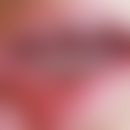Synonym(s)
DefinitionThis section has been translated automatically.
An annual herbaceous meadow plant from the summer root family (Orobanchaceae), which grows to a height of 5 to 40 cm. Euphrasia is a semi-parasite that draws water and nutrients from the host roots by means of suction roots, but can also vegetate without the host. However, the plant needs a host to germinate. Euphrasia rostkoviana flowers from July to September. The flowers are white to purple. Its elongated leaves are about 1.0 cm long and have serrated edges. There are various species of Euphrasia, including Euphrasia stricta, Euphrasia rostkoviana Hayne and mixtures. Euphrasia rostkovia is mainly used phytotherapeutically.
Euphrasia rostkoviana grows in meadows up to altitudes of 2300 m.
Occurrence: Germany, France, Belgium, Switzerland, Italy. Other members of the family are found in northern European countries and in Russia.
The dried, flowering herb(Euphrasiae herba) from the stems, leaves and flowers of Euphrasia rostkoviana, also Euphrasia stricta, as well as fresh extracts of the whole plant are used phytotherapeutically as starting products. The name "eyebright" comes from its use for eye complaints.
Indications: for coughs and hoarseness; tea applications are particularly indicated for conjunctivitis or blepharitis (see Euphrasia application below).
HMPC: due to lack of proof of efficacy and for hygienic reasons, use on the eye is not recommended.
ESCOP: not processed
Commission E: Negative monograph due to lack of scientific studies, then zero monograph if risks are not expected.
IngredientsThis section has been translated automatically.
Iridoid glucosides, e.g. aucubin, euphroside and catalpol, phenolic carboxylic acids, polyphenolic ester glycosides, flavones, flavonoids, tannins (condensed and hydrolyzable), lignans, mannitol(-ol), alkaloids, sterols.
You might also be interested in
EffectsThis section has been translated automatically.
astringent, soothing, antioxidant, anti-inflammatory, antimicrobial
Field of application/useThis section has been translated automatically.
Folk medicine: Mild conjunctivitis, eye irritation, foreign body sensation in the eye, dry eyes, swelling of the eyelid.
DosageThis section has been translated automatically.
Two - to three times / day 1-2 drops in the eyes
ContraindicationThis section has been translated automatically.
Known allergy to any of the ingredients
Trade namesThis section has been translated automatically.
Euphrasia® eye drops
LiteratureThis section has been translated automatically.
- Blazics B et al. (2009) Antioxidant activity of different phenolic fractions separated from Euphrasia rostkoviana Hayne. Acta Pharm Hung 79:11-16.
- Novy P et al. (2015) Composition and Antimicrobial Activity of Euphrasia rostkoviana Hayne Essential Oil. Evid Based Complement Alternat Med 2015:734101.
- Salama O et al. (1983) Iridoid Glucosides from Euphrasia rostkoviana. Planta Med 47:90-94.
- Salama O et al. (1981) A New Lignan Glucoside from Euphrasia rostkoviana. Planta Med 42:123-124.
- Chrubasik-Hausmann S (2018) Euphrasia officinalis L. Eyebright - for the local application of irritated eyes. zkm 3: 44-45
- https://arzneipflanzenlexikon.info/augentrost.php
- Blaschek W (2015) Wichtl tea drugs and phytopharmaceuticals. A handbook for practice. Wissenschaftliche Verlagsgesellschaft Munich. S 247-249




